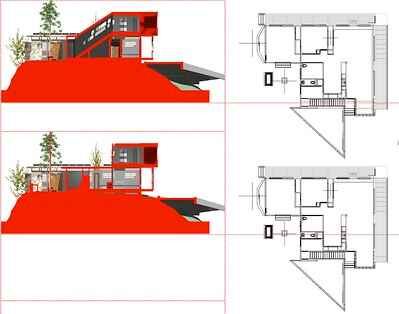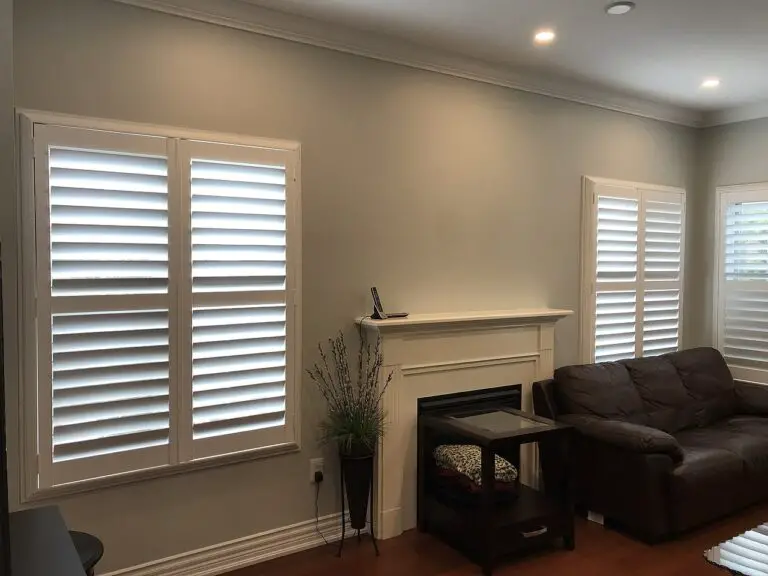5 Disadvantages of Passive Solar Energy Explained
Disadvantages of passive solar energy are; potential insufficiency, combination with non-renewable energy, geography-dependence, passive design problems, and storage limitations.
This article discusses the disadvantages of passive solar energy, as follows;
1). Potential Insufficiency (as one of the Disadvantages of Passive Solar Energy)
One of the problems with passive solar energy is the possible insufficiency, of this renewable energy concept, with respect to meeting the energy needs of a given building.
The amount of solar thermal energy and visible light that can be captured by a passive solar building depend on multiple factors, such as the location and design of the building, as well as the energy-management approach of the inhabitants.
Optimizing each of these factors simultaneously is not always possible in real-life scenarios. Also, the energy needs of a building are often likely to far outweigh the maximum passive solar capacity of the same building.
On a comparison of passive vs active solar; although the output of each approach is not very large, active solar is often able to collect more usable solar energy.
One of the concepts that is important for predicting the passive solar productivity of buildings is thermal mass; which is a measure of the ability of building materials in various parts such as walls and floors, to absorb and retain heat [2], thereby acting as energy storage systems.
Having too-much or too-little thermal mass makes a building less productive as a passive solar structure.
A look at the various examples of passive solar components of buildings, shows that even minor shortcomings in insulation, orientation and window design (or handling) can lead to major energy losses and thermal fluctuations that jeopardize the efficiency of passive solar buildings.
In spite of its multiple advantages like low-cost, the potential insufficiency of passive solar energy can lead to reliance on auxiliary devices or energy resources [4], which contradicts the objective of sustainability that is associated with passive solar applications.

2). Combination with Non-Renewable Energy
In general, passive solar buildings are not equipped to convert solar energy to electricity.
Rather, their capabilities stop at the point of energy transfer, by conduction, convection and radiation.
What this means is that for a building designed to utilize passive solar energy, there is often still need for non-renewable energy resources like nuclear and fossil fuels (which are the most common sources for generating electricity [5]) to be used for electricity generation.
The simultaneous use of passive solar with non-renewable energy resources can be summarily explained by pointing our that passive solar is able to reduce the intensity of fossil fuel usage, rather than to achieve a total replacement [3].
As a clean/green energy concept, this is a major shortcoming for passive solar energy, because it indicates loopholes in the role of this approach as a contributor to the energy transition agenda.
It suggests that buildings designed to use passive solar energy, unless equipped with other clean energy systems, may still contribute to greenhouse emission, global warming, and other forms of environmental degradation in their surroundings.
Given the growing popularity of sustainable development and its daughter-concepts like green building, remediation and energy conservation, the best approach to passive solar development will likely require its augmentation with active solar and photoelectric devices like panels, or with other sustainable energy systems that can fill the gaps in energy production/conversion.

3). Geography Dependence (as one of the Disadvantages of Passive Solar Energy)
Aspects of passive solar design include location, orientation, apertures, insulation, thermal mass, and convective ventilation.
Passive solar design depends on circumstantial factors that revolve around the environment and economy. The environmental factors themselves include the geography of the area where passive solar energy is to be harnessed.
Three of the main design considerations for a passive solar building are; geographic location (especially latitudinal), climate, and available building resources.
Sites in equatorial regions that are free of sociological issues like overpopulation, are likely to have access to larger amounts of solar radiation for passive capture and utilization, than others. Also, areas where urbanization and industrial activities have not led to unfavorable and unnatural climatic alterations, are suitable.
Studies show that passive solar energy is strongly influenced by geographic conditions, so that issues like global warming affect the effectiveness and relevance of passive solar heating applications [7].
This is a drawback because it reduces the guarantee of good performance of passive solar buildings as we move from one geographic zone to another.
The geographic constraint associated with passive solar energy means that in regions with extreme climatic conditions like deserts, passive building designs must follow environmental (and architectural) guidelines to optimize their performance [9].
Only on the provision and observation of such guidelines can passive solar buildings be relevant in all inhabited parts of the world. An example of this can be seen in the specialized approach to passive building design for indoor temperature regulation, in areas susceptible the urban heat island effect [6].

4). Passive Design Problems
The key to designing a passive solar home is to take cognizance of geographic conditions on the site, and adapt the dimensions and materials of the buildings to these conditions.
While the above may sound simple, it is often extremely difficult in real-life scenarios, so that it is hardly possible to completely synergize the design of a passive building with the conditions of its surroundings.
The problems with passive solar design include optimization of heat (and light) gain, retention and energy storage, as well as temperature regulation for comfort of building occupants [8].
Creating or adopting a suitable passive solar design for buildings is tricky due to changing climate in many areas, and the fact that design decisions made for maximum energy efficiency, can conflict with the livability of buildings in terms of geometry, position and size of rooms, windows, wall thickness, as well as navigability of the building interior.
Disadvantages of passive solar building design arise from their compatibility with the climate, location, altitude, as well as the comfort of occupants. In some cases, minor deviations in small details, from the required design, can have huge negative consequences for energy-performance.
5). Storage Limitations (as one of the Disadvantages of Passive Solar Energy)
Passive storage is a type of energy storage that involves retention of energy in an absorbent medium, without any active mechanical or electrical charging process. It is most suitable for thermal energy, which can be absorbed and retained passively by some materials.
The way to store passive solar energy is by positioning heat-absorbent materials like concrete, wood, and water, in the path of incoming solar electromagnetic waves, which penetrate, and are retained in, these materials.
An example of a passive solar storage component of buildings is the (adobe) trombe wall, which is often made from heat-retentive concrete [1].
Regardless of the material(s) used, energy storage in passive solar systems is far less efficient than that which can be achieved with technologies like the deep cycle battery, which is used to store electricity in chemical-energy form.
Energy that is stored in passive solar buildings can be lost through any of the energy transfer mechanisms like conduction, convection and radiation.
Conclusion
Disadvantages of passive solar energy are;
1. Potential Insufficiency
2. Combination with Non-Renewable Energy
3. Geography Dependence
4. Passive Design Problems
5. Storage Limitations
References
1). Hassanain, A. A.; Hokam, E.; Mallick, T. K. (2011). "Effect of solar storage wall on the passive solar heating constructions." Energy and Buildings 43(2-3):737-747. Available at: https://doi.org/10.1016/j.enbuild.2010.11.020. (Accessed 19 April 2023).
2). Hussein, M. H.; Monna, S.; Juaidi, A.; Barlet, A.; Baba, M.; Bruneau, D. (2021). "Effect of thermal mass of insulated and non-insulated walls on building thermal performance and potential energy saving." Journal of Physics Conference Series 2042(1). Available at: https://doi.org/10.1088/1742-6596/2042/1/012159. (Accessed 19 April 2023).
3). Lahoucine, G.; Fatnassi, H.; Bouharroud, R.; Ezzaeri, K.; Bazgaou, A.; Wifaya, A.; Demrati, H.; Bekkaoui, A.; Ahmed, A.; Poncet, C.; Bouirden, L. (2019). "Heating canarian greenhouse with a passive solar water–sleeve system: Effect on microclimate and tomato crop yield." Solar Energy 188(2019):1349-1359. Available at: https://doi.org/10.1016/j.solener.2019.07.004. (Accessed 19 April 2023).
4). Liu, Z.; Wu, D.; He, B-J.; Wang, Q.; Yu, H.; Ma, W.; Jin, G. (2019). "Evaluating potentials of passive solar heating renovation for the energy poverty alleviation of plateau areas in developing countries: A case study in rural Qinghai-Tibet Plateau, China." Solar Energy 187. Available at: https://doi.org/10.1016/j.solener.2019.05.049. (Accessed 19 April 2023).
5). Lotfabadi, P. (2015). "Solar Considerations in High-rise Buildings." Energy and Buildings 89. Available at: https://doi.org/10.1016/j.enbuild.2014.12.044. (Accessed 19 April 2023).
6). Österreicher, D.; Sattler, S. (2018). "Maintaining Comfortable Summertime Indoor Temperatures by Means of Passive Design Measures to Mitigate the Urban Heat Island Effect—A Sensitivity Analysis for Residential Buildings in the City of Vienna." Urban Sci. 2018, 2, 66. Available at: https://doi.org/10.3390/urbansci2030066. (Accessed 19 April 2023).
7). Pajek, L.; Potočnik, J.; Košir, M. (2022). "The effect of a warming climate on the relevance of passive design measures for heating and cooling of European single-family detached buildings." Elsevier, Energy and Buildings. Volume 261, 15 April 2022, 111947. Available at: https://doi.org/10.1016/j.enbuild.2022.111947. (Accessed 19 April 2023).
8). Yakubu, G. S. (1996). "The reality of living in passive solar homes: A user-experience study." Renewable Energy, Elsevier, vol. 8(1), pages 177-181. Available at: https://ideas.repec.org/a/eee/renene/v8y1996i1p177-181.html. (Accessed 19 April 2023).
9). Zaltan, S.; Altan, H. (2016). "The Effect of Passive Design Strategies on Thermal Performance of Female Secondary School Buildings during Warm Season in a Hot and Dry Climate." Frontiers in Built Environment 2(10). Available at: https://doi.org/10.3389/fbuil.2016.00003. (Accessed 19 April 2023).






